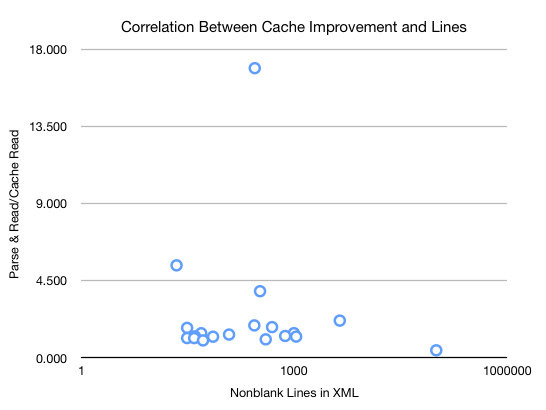Yaw brings up a good question in Slack: What is the performance on an actual Android device? (I ran this on a fast MacBook Pro with a solid state drive.) I think I’d better build something to produce this data for all the forms on an Android device before doing much more analysis.
I added nonblank lines in the XML form, and as you can see, there’s no correlation between that and the performance improvement from caching.
